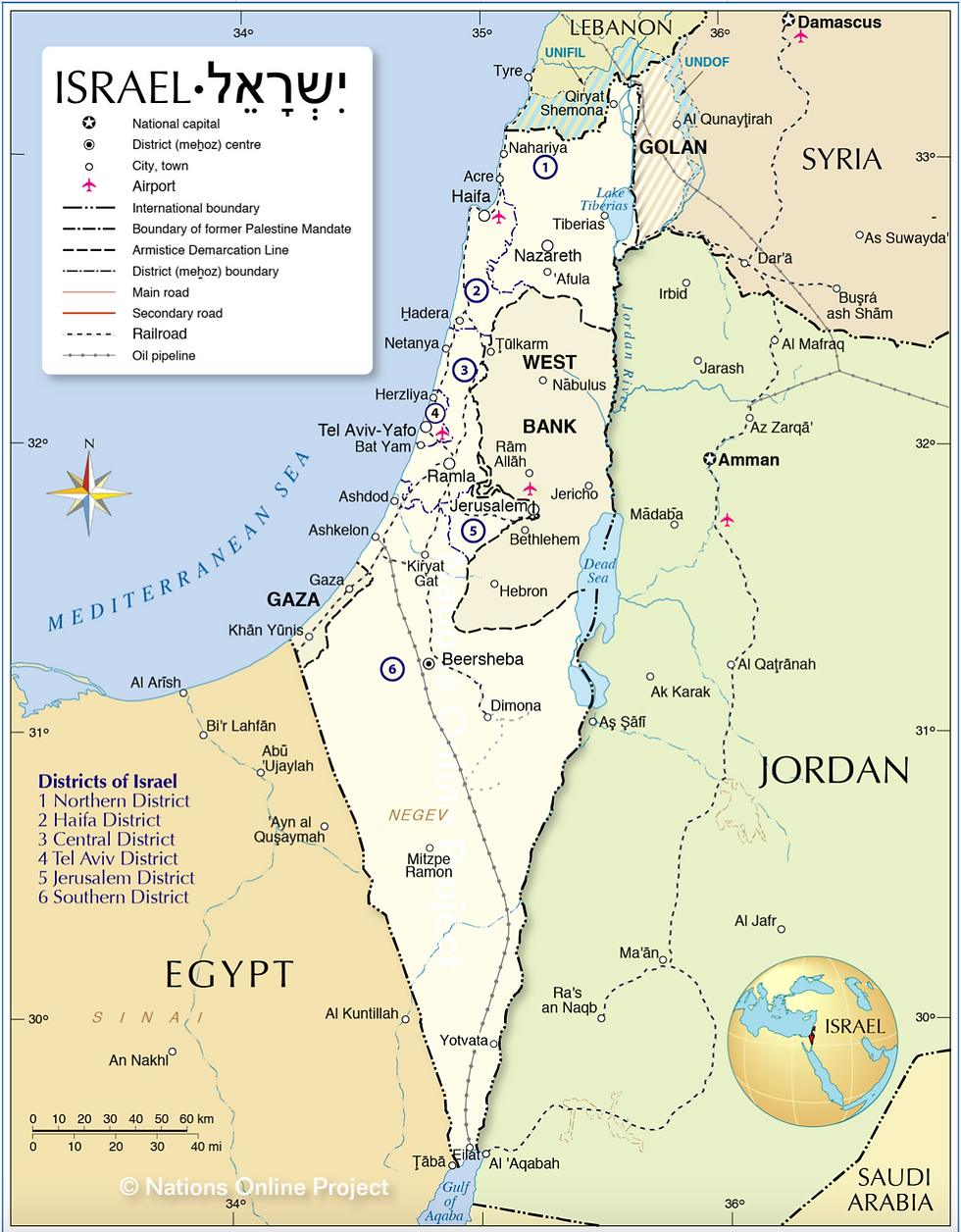Israeli-Palestinian Conflict
- Alexis Lindenfelser

- Jun 4, 2021
- 3 min read
Updated: Jun 4, 2021
In the past month, tensions between Palestinians and Israelis have reached a breaking point in the Middle East. Here’s a quick rundown of what’s going on and how it happened:
The Current Conflict
The conflict was triggered by an impending Israeli court decision regarding the eviction of four Palestinian families from their homes in a neighborhood called Sheik Jarrah in East Jerusalem. Israel and neighboring

Jordan dispute ownership of the real estate in Sheik Jarrah. Palestinians flocked to the streets to protest against the forced eviction and clashed violently with police. Police cracked down the rioters with tear gas, rubber bullets, and flash grenades, leaving many civilians and officers seriously injured. Israeli police also cracked down on protestors at the Al Aqsa Mosque during a mass gathering for the Muslim holiday, Laylat al-Qadr (a special night taking place during the holy month of Ramadan). The conflict at the mosque left 20 civilians injured, many of whom were treated at the scene by the Palestinian Red Crescent, which provides emergency medical aid.
Islamic militant groups, Hamas and Palestinian Islamic Jihad, fired rockets at Jerusalem in response to Israel’s actions against Palestinians at the Al Aqsa mosque. Israel fired its own rockets into Gaza following the attack. This conflict between Israel and Hamas is the worst conflict that has occurred between the two sides since their most recent war in 2014. The fighting, which began on May 10, has claimed the lives of 250 people. The 250 people who lost their lives include innocent children on both sides, civilians, Hamas soldiers, and a few Israelis.
On May 21, a cease-fire, brokered by Egypt and supported by the US and other allies, was formed between Israel and Hamas. Although Hamas and Israel gave different versions of the terms of the cease-fire, so far both sides have followed through with the deal and the skies have remained relatively peaceful.
On May 25, US Secretary of State, Anthony Bliken, embarked on his first Middle East trip to meet with Israeli and Palestinian leadership. He said that the US would work to expand economic opportunities for Palestinians living in Gaza and the West Bank, and work to tackle the underlying causes of the violence to maintain peace. Earlier, President Biden also said “I believe Palestinians and Israelis equally deserve to live safely and securely and enjoy equal measures of freedom, prosperity and democracy… My administration will continue our quiet, relentless diplomacy toward that end.” President Biden is also helping the UN to provide humanitarian aid and rebuild Gaza’s damaged infrastructure, without empowering Hamas to replenish its weapons.
A History of Animosity
In 1948, just after Israel gained independence, the neighboring Arab countries initiated a war with Israel, which caused hundreds of thousands of Palestinian Arabs to become refugees. Some Palestinians still live in refugee camps.
After the Six-Day war in 1967, Israel captured all of Jerusalem from Jordan and now claims all of Jerusalem as its capital. However, most countries maintain their embassies in the old capital, Tel Aviv. President Trump, despite making Palestinian-Israeli peace a top priority, enraged Palestinian officials by moving the US embassy to Jerusalem in 2018.

Jerusalem is sacred to both Muslims and Jews, and Palestinians seek East Jerusalem as the capital of their future state since they are currently dispersed throughout the region. Most of them live in Gaza and the West Bank, which lie between Israel and Jordan’s international borders, and are ruled by the Palestinian authority (as decreed by the UN).
The international community is hoping to establish peace in the region through a two-state solution, meaning Palestinians receive their own internationally recognized country (state). Many Palestinians seek East Jerusalem as their future capital, which contributes significantly to conflicts there. However, due to pushback from both sides, this plan has yet to come to fruition.
What the Future Holds
The cease-fire between Israel and Hamas is very fragile, and past cease-fires have not lasted long. The world is hoping peace is maintained so Gaza, which is home to 2 million Palestinians, can rebuild its infrastructure and

find homes for the displaced residents.
Israel now faces new the new challenge of animosity between its own Jewish and Muslim citizens. Many Arabs in Israel feel marginalized by the Jewish majority, discriminated against by the government and unwelcome in the country. Arabs find it hard to fully trust the police. Although conflicts have lessened since the cease-fire, mixed neighborhoods still face tensions. Cars have been burned, popular restaurants for Muslims and Jews destroyed, and neighbors turned enemies.

Nisim Dahan, a 72-year-old resident of Lod, Israel, told the Wall Street Journal that “Jews and Arabs are destined to live together… Your neighbor that is close is better than your brother far away.” His positive phrase offers hope of a future where Israelis, Palestinians, Jews and Muslims can again live in harmony.
Sources:



Comments